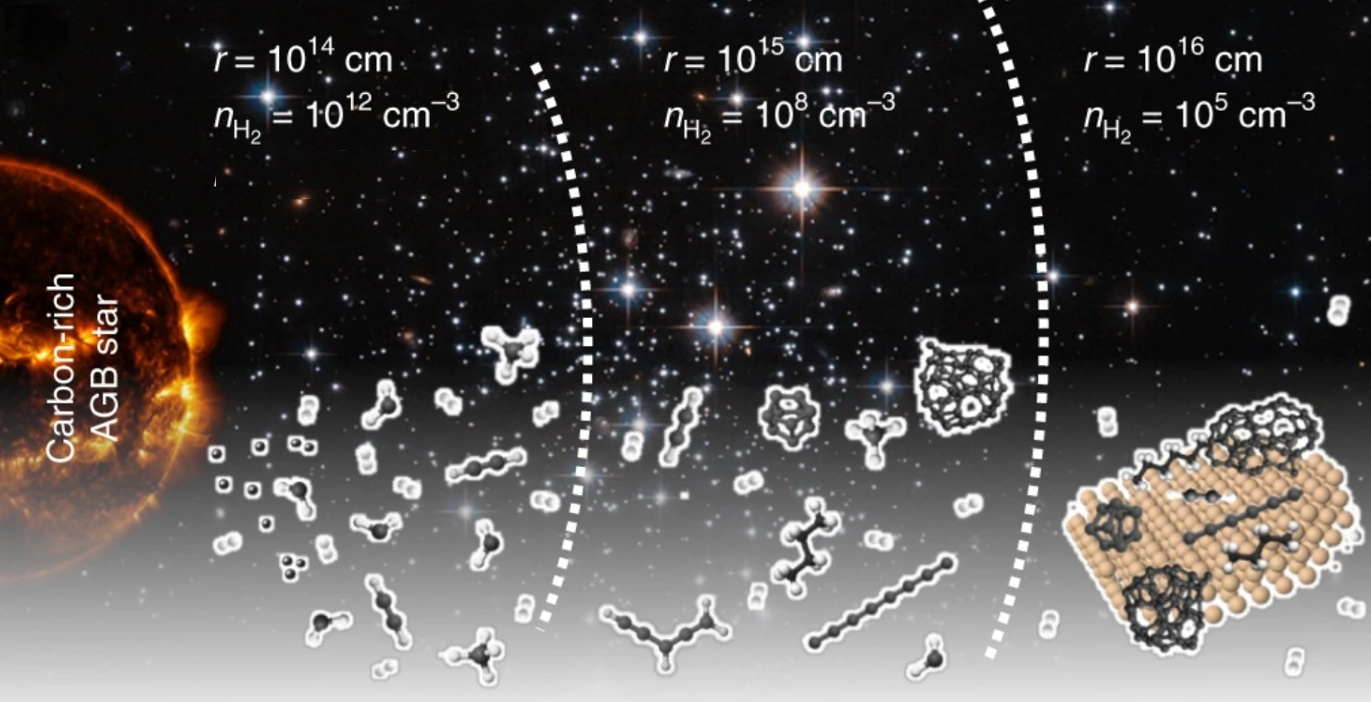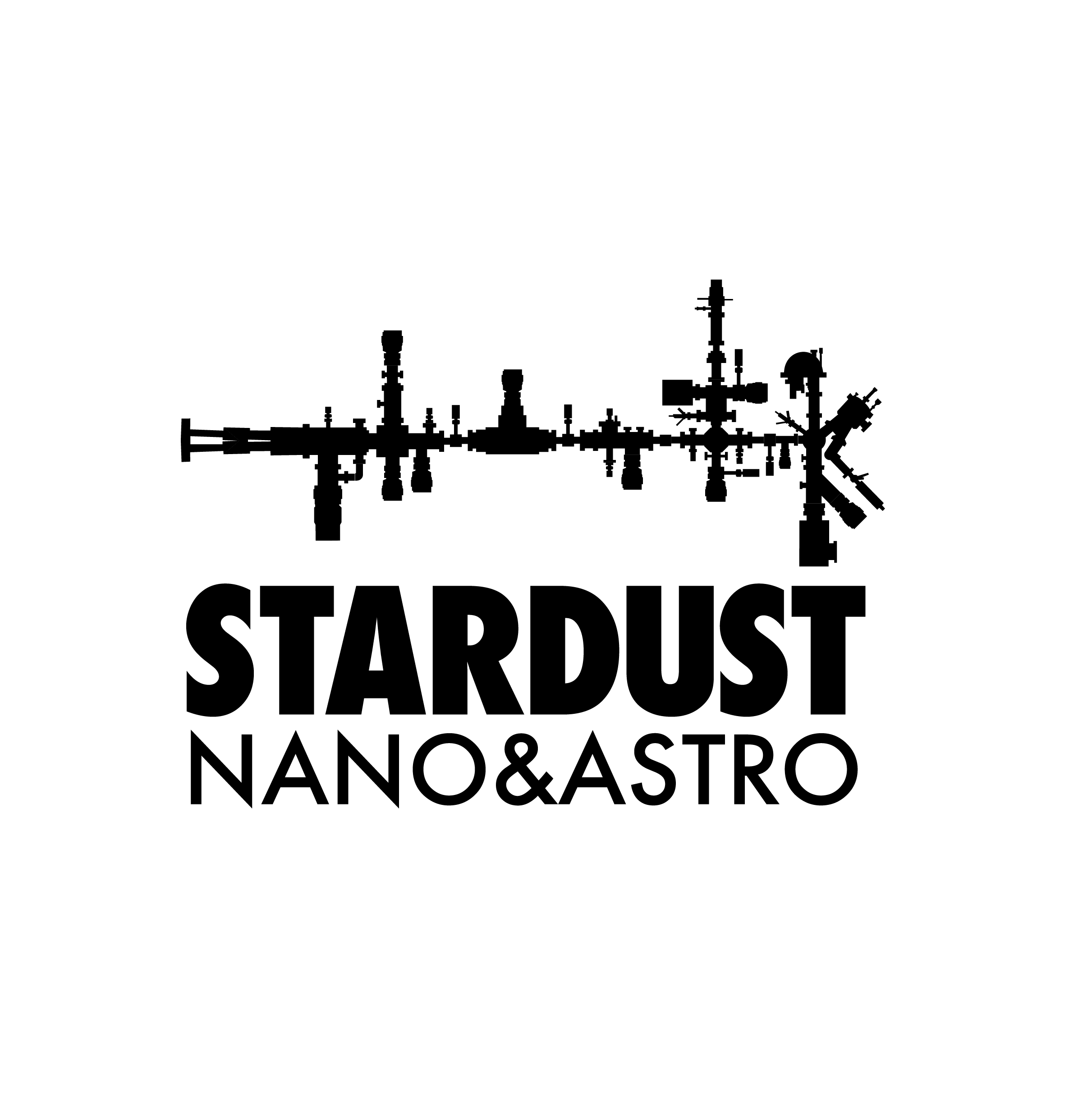Astrochemistry
The formation of cosmic dust in dying stars is a fascinating topic that is still far from being completely understood. Once dust forms, it is expelled toward the interstellar medium (ISM), where it is processed by energetic radiation (UV, cosmic rays, etc.). Once dust reaches the densest part of the ISM, the so-called Dense Molecular Clouds, dust grains are coated with molecular ices (H2O, CO2, CO, CH4, NH3).
Stardust is capable of simulating in the laboratory the complete journey of dust nanograins from their formation in evolved stars to their processing in the ISM and in molecular clouds. In particular, in Stardust, dust nanograin analogs are fabricated from atomic precursors and from neutral species, which mimic the process of dust growth in evolved stars. Once formed, the dust analogs can be characterized by a battery of techniques in situ (i.e., without exposing them to air) and deposited on arbitrary substrates. It is also possible to cool down the analogs and process them with UV radiation, ion and electron bombardment, or expose them to gases, atomic H, and atomic O. In addition, molecular ices can be grown on the dust analogs, simulating the ice mantles that coat dust in Dense Molecular Clouds.
With all these capabilities, Stardust is a world-wide unique experimental station for laboratory astrochemistry and powerful tool for unveiling new physicochemical processes occurring in different environments of space.

Selected bibliography
- G. Tajuelo-Castilla, J. I. Mendieta-Moreno, M. Accolla, J.M. Sobrado, S. Canola, P. Jelinek, G. Ellis, J.A. Martín-Gago and G. Santoro, “Photocleavage of aliphatic C-C bonds in the interstellar medium” Astrophys. J. 965, 184 (2024). https://doi.org/10.3847/1538-4357/ad33c4
- G. Santoro, L. Martínez, K. Lauwaet, M. Accolla, G. Tajuelo-Castilla, P. Merino, J. M. Sobrado, R. J. Peláez V. J. Herrero, I. Tanarro, A. Mayoral, M. Agúndez, H. Sabbah, C. Joblin, J. Cernicharo and J. A. Martín-Gago, “The chemistry of cosmic dust analogues from C, C2 and C2H2 in C-rich circumstellar envelopes”, Astrophys. J. 895, 97 (2020). https://doi.org/10.3847/1538-4357/ab9086
- L. Martínez, G. Santoro, P. Merino, M. Accolla, K. Lauwaet, J. Sobrado, H. Sabbah, R. J. Peláez, V. J. Herrero, I. Tanarro, M. Agúndez, A. Martín-Jiménez, R. Otero, G. Ellis, C. Joblin, J. Cernicharo and J. A. Martín-Gago, “Prevalence of non-aromatic carbonaceous molecules in the inner regions of circumstellar envelopes”, Nature Astronomy. 4, 97-105 (2020). https://doi.org/10.1038/s41550-019-0899-4
